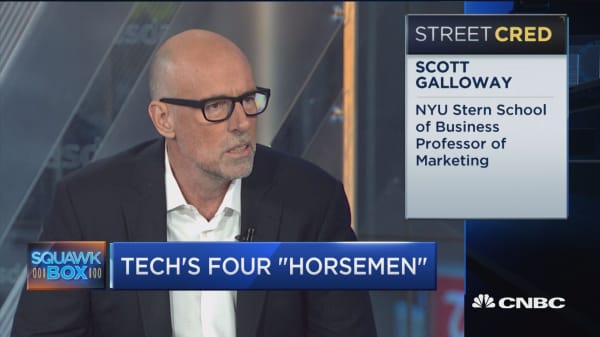The following is an excerpt from "The Four: The Hidden DNA of Amazon, Apple, Facebook and Google" (Oct. 3, 2017, Portfolio) by Scott Galloway:
Firms try to build higher and higher walls to keep enemies (upstarts and competitors) from invasion. Business theorists call these structures "barriers to entry."
They are nice in theory, but increasingly traditional walls are showing cracks, even crumbling — especially in tech. The plummeting price of processing power (Moore's Law again), coupled with an increase in bandwidth and a new generation of leadership that has digital in their DNA, has produced bigger ladders than anyone ever expected. ESPN, J.Crew, and Jeb Bush . . . all unassailable, no? No. Digital ladders (over-the-top video, fast fashion, and @therealdonaldtrump) can vault almost any wall.
So, what's a ridiculously successful firm to do? Malcolm Gladwell, the Jesus of business books, highlights the parable of David & Goliath to make the key point: don't fight on other people's terms. In other words, once you've made the jump to light speed as a tech firm, you need to immunize yourself from the same conquering weapons your own army levied on the befuddled prey. There are several obvious examples: network effects (everyone is on Facebook because . . . everyone's on Facebook); IP protection (every firm in tech over $10 billion is suing, and being sued by, every other $10 billion tech firm), and developing an industry standard—monopoly—ecosystem (typing this on Word because I have no choice).
However, I'd argue that digging deeper moats is the real key to long-term success.
The iPhone will not be the best phone for long. Too many firms are struggling to catch up. However, there is a key asset of Apple Inc. that has a stronger immune system: its 492 retail stores in 19 countries. Wait, a marauder could just put up an online store, no? No. HP.com vs. the Apple Regent Street Store in London is like bringing a (butter) knife to a gunfight. And even if Samsung decides to allocate the capital, nine women can't have a baby in a month and the Korean giant would need a decade (at least) to present a similar offering.
Brick and mortar's troubles have been laid at the feet of digital disruption. There is some truth to that. However, digital sales are still only 10–12 percent of retail. It's not stores that are dying, but the middle class, and the stores serving them. Most that are located in, or serving, middle-class households are struggling. By comparison, stores in affluent neighborhoods are holding strong. The middle class used to be 61 percent of Americans, now they are the minority, representing less than half the population . . . the rest being lower or upper income.




